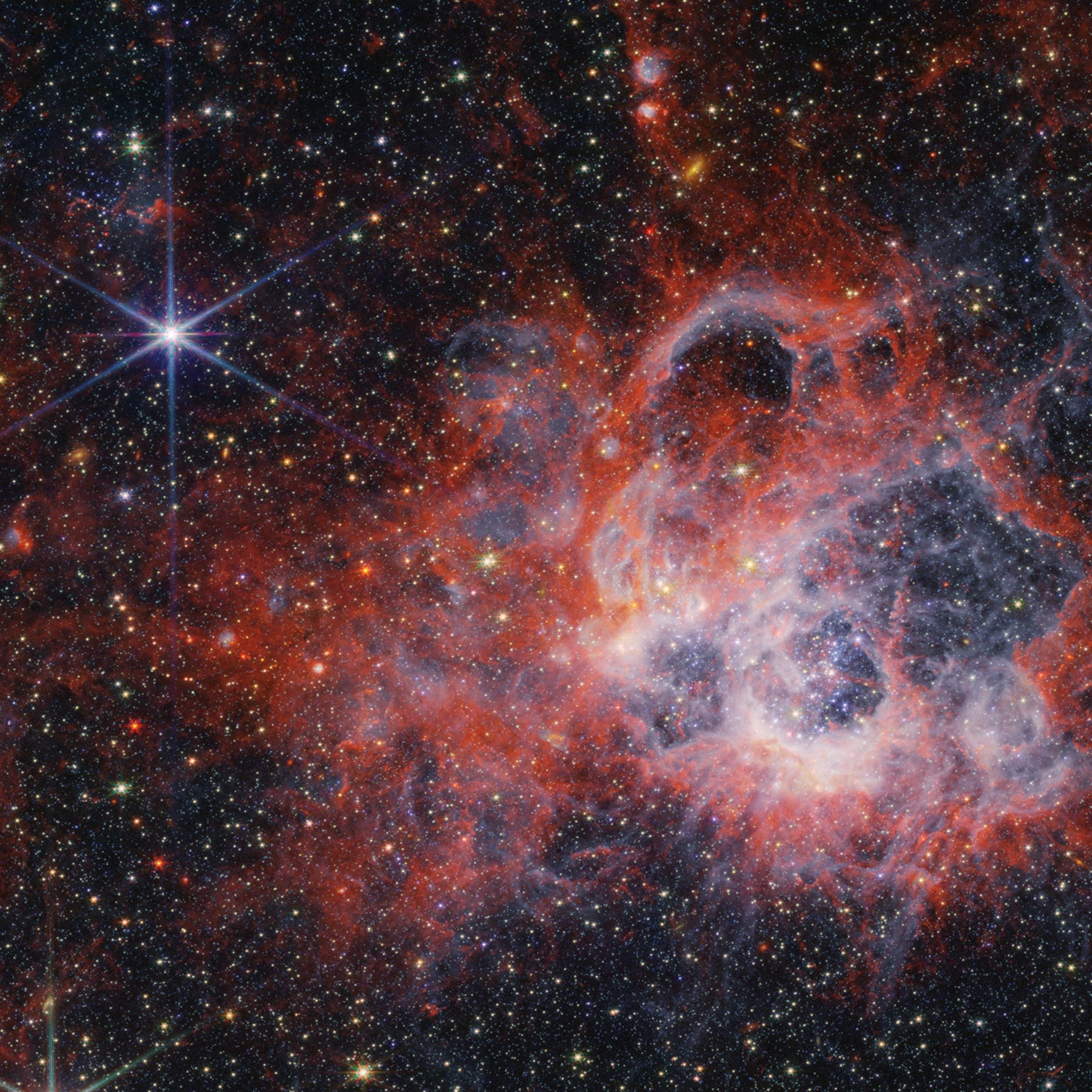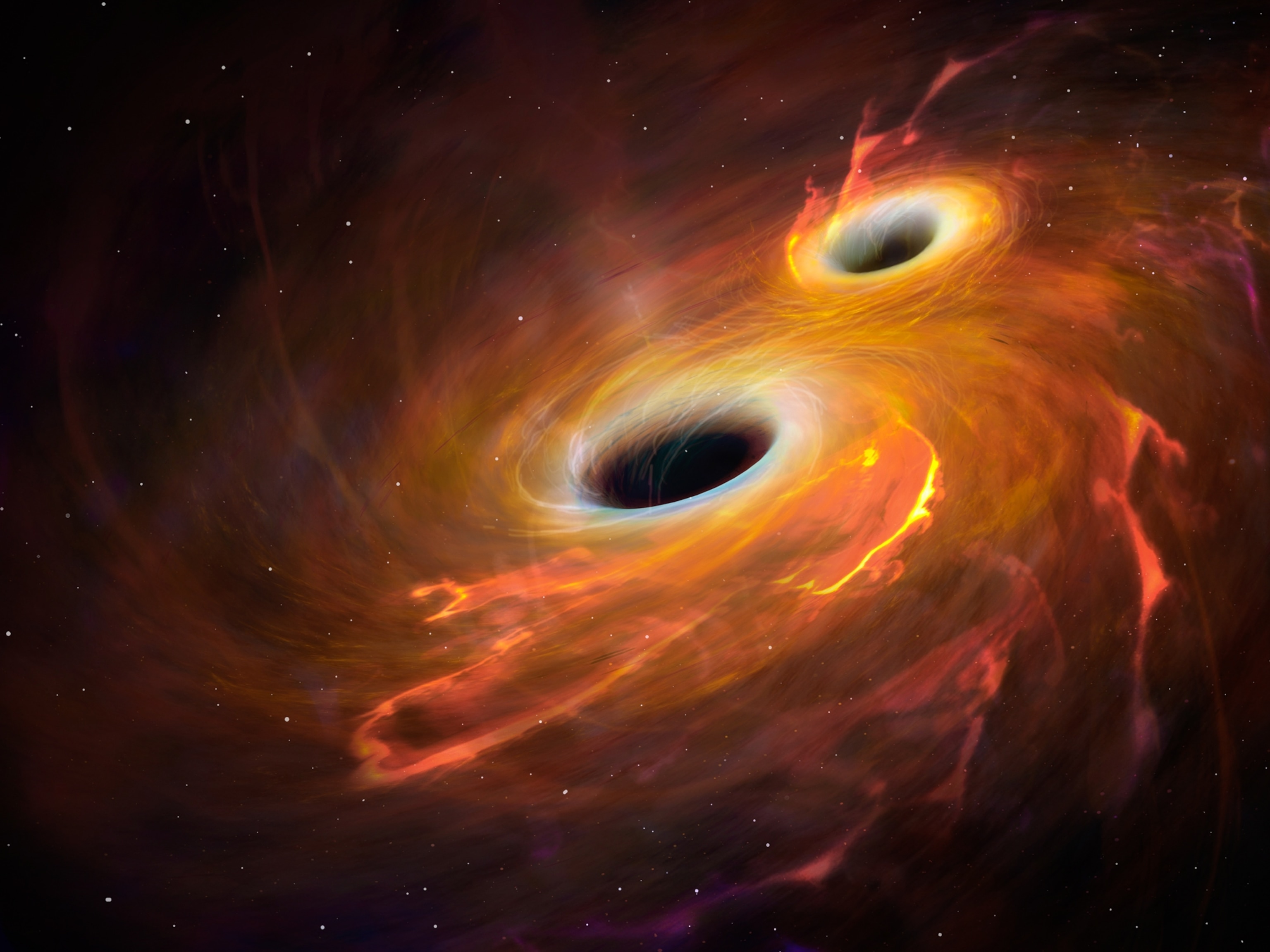
Dark Matter Is an Illusion, New Antigravity Theory Says
Boiling sea of particles in space may create repulsive gravity.
The mysterious substance known as dark matter may actually be an illusion created by gravitational interactions between short-lived particles of matter and antimatter, a new study says.
Dark matter is thought to be an invisible substance that makes up almost a quarter of the mass in the universe. The concept was first proposed in 1933 to explain why the outer galaxies in galaxy clusters orbit faster than they should, based on the galaxies' visible mass.
(Related: "Dark-Matter Galaxy Detected: Hidden Dwarf Lurks Nearby?")
At the observed speeds, the outer galaxies should be flung out into space, since the clusters don't appear to have enough mass to keep the galaxies at their edges gravitationally bound.
So physicists proposed that the galaxies are surrounded by halos of invisible matter. This dark matter provides the extra mass, which in turn creates gravitational fields strong enough to hold the clusters together.
In the new study, physicist Dragan Hajdukovic at the European Organization for Nuclear Research (CERN) in Switzerland proposes an alternative explanation, based on something he calls the "gravitational polarization of the quantum vacuum."
(Also see "Einstein's Gravity Confirmed on a Cosmic Scale.")
Empty Space Filled With "Virtual" Particles
The quantum vacuum is the name physicists give to what we see as empty space.
According to quantum physics, empty space is not actually barren but is a boiling sea of so-called virtual particles and antiparticles constantly popping in and out of existence.
Antimatter particles are mirror opposites of normal matter particles. For example, an antiproton is a negatively charged version of the positively charged proton, one of the basic constituents of the atom.
(See "Antimatter Found Orbiting Earth—A First.")
When matter and antimatter collide, they annihilate in a flash of energy. The virtual particles spontaneously created in the quantum vacuum appear and then disappear so quickly that they can't be directly observed.
In his new mathematical model, Hajdukovic investigates what would happen if virtual matter and virtual antimatter were not only electrical opposites but also gravitational opposites—an idea some physicists previously proposed.
"Mainstream physics assumes that there is only one gravitational charge, while I have assumed that there are two gravitational charges," Hajdukovic said.
According to his idea, outlined in the current issue of the journal Astrophysics and Space Science, matter has a positive gravitational charge and antimatter a negative one.
That would mean matter and antimatter are gravitationally repulsive, so that an object made of antimatter would "fall up" in the gravitational field of Earth, which is composed of normal matter.
Particles and antiparticles could still collide, however, since gravitational repulsion is much weaker than electrical attraction.
(Related: "At Ten, Dark Energy 'Most Profound Problem' in Physics.")
How Galaxies Could Get Gravity Boost
While the idea of particle antigravity might seem exotic, Hajdukovic says his theory is based on well-established tenants in quantum physics.
For example, it's long been known that particles can team up to create a so-called electric dipole, with positively charge particles at one end and negatively charged particles at the other. (See "Universe's Existence May Be Explained by New Material.")
According to theory, there are countless electric dipoles created by virtual particles in any given volume of the quantum vacuum.
All of these electric dipoles are randomly oriented—like countless compass needles pointing every which way. But if the dipoles form in the presence of an existing electric field, they immediately align along the same direction as the field.
According to quantum field theory, this sudden snapping to order of electric dipoles, called polarization, generates a secondary electric field that combines with and strengthens the first field.
Hajdukovic suggests that a similar phenomenon happens with gravity. If virtual matter and antimatter particles have different gravitational charges, then randomly oriented gravitational dipoles would be generated in space.
If these gravitational dipoles form near a galaxy—a massive object that would have a strong gravitational field—the dipoles should become polarized.
This polarization would generate a secondary gravitational field that would combine with and strengthen the galaxy's gravitational field.
"My theory makes the gravitational field of a galaxy stronger—without dark matter," Hajdukovic said.
(Related: "New Proof Unknown 'Structures' Tug at Our Universe.")
Evidence for Dark Matter "Very Compelling"
Physicist David Evans called the new study a "very interesting theoretical exercise," but he said he isn't ready to abandon dark matter just yet.
"The evidence for dark matter is now very compelling," said Evans, of the University of Birmingham, who leads the U.K. team for the ALICE detector at CERN's Large Hadron Collider.
For example, in 2006 astronomers unveiled a photo of two colliding galaxies known as the Bullet cluster that purportedly showed the separation of matter from dark matter.
A similar effect was observed in the Pandora cluster earlier this summer, said Evans, who was not involved in the study.
(Related: "Dark Matter Proof Found Over Antarctica?")
Hajdukovic said he is currently expanding his theory to account for these observations. His preliminary calculations, he said, suggest that "what is observed in the Bullet cluster and more recently at the Pandora cluster may be understood in the framework of the gravitational polarization of the quantum vacuum."
CERN physicist Michael Doser agreed that Hajdukovic's ideas are "unorthodox" but did not immediately dismiss the new theory.
"The mainstream view suffers from the lack of a detected dark matter particle, and so exploring a wide range of possibilities is at this moment perfectly legitimate, as long as they are compatible with all data," Doser said in an email.
Doser is a member of CERN's AEgIS experiment, which aims to measure the gravitational charge of antihydrogen, the antimatter version of hydrogen, and thus would prove whether matter and antimatter are gravitationally repulsive.
"In a few years," Doser said, "we should definitely be in a position to confirm or refute [Hajdukovic's] hypothesis."








